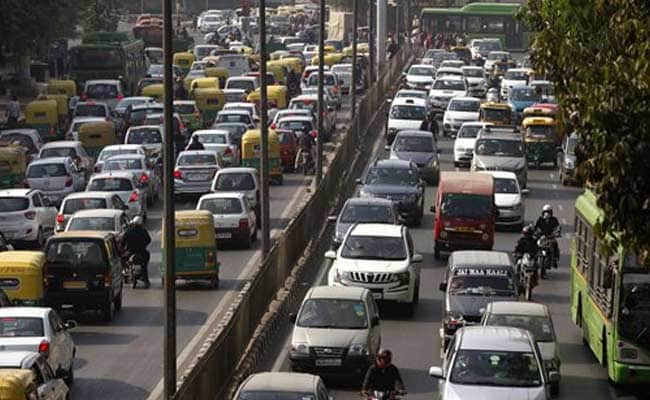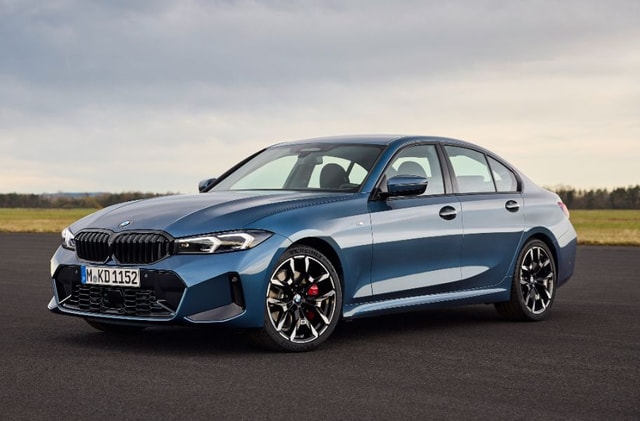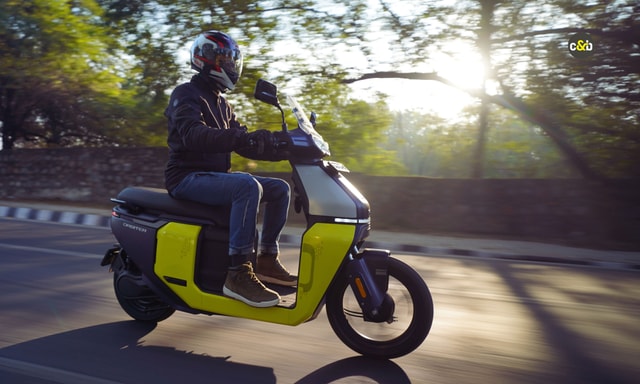Mercedes to Maruti: Cars Causing More Pollution in India Than Europe

The study found that the Mercedes Benz C 220d , Toyota Land Cruiser 200 GX , Mahindra XUV 500 and Hyundai i20 diesel models in India emit 455% more particulate matter and over 200% more poisonous nitrogen oxide. The difference is because India, less than half actually, follows Euro 4 or Bharat Stage 4 whereas Europe is now at the vastly improved Euro 6.
Vikram Kirloskar, Vice Chairman, Toyota Kirloskar Motor said," Production of Euro 5 & 6 engines is related to fuel quality. BS 4 fuel is available in India so BS4 engines are manufactured, cleaner engine can't be manufactured by itself. When Euro 5 and 6 fuel is available in India, our cars will produce the same emissions as in Europe.
Mercedes-Benz said: "Mercedes-Benz vehicles manufactured in India comply with the existing regulatory limits (BS IV). In case of stricter emission standards, we can offer our EU 6 diesel models that are already in use in Europe, today. However, this requires the availability of compatible fuel quality than the existing one, across the country."
Mahindra responded to study findings and said, "XUV 500 has been developed in India for Indian emission legislation norms like any other car. To bring Euro 6 legislation and technology, availability of Euro 6 fuel across all over India is the key point."
But what about petrol cars? The BS 4 standard petrol cars sold in Delhi are currently 7 times cleaner than diesel ones. But Maruti Celerio and Honda City petrol models emit 33% more NOx in India as against the European and Australian models.
Maruti-Suzuki Chairman, RC Bhargava said, "The problem is not with us , we need the right fuel and component manufacturers in India need time to manufacture euro 5 and euro 6 engine components.
Honda said they were not aware of the ICCT's findings but said they are committed to follow the government norms which "require a concerted approach from the government, oil industry, auto manufacturers and testing agencies to realize Euro 6 goal in a realistic time frame"
That's the essence of why Euro 6 is still six years away in India whereas Europe adopted it last year despite the Delhi government demanding it in 2 years.
Centre has proposed to impose Euro 5 norms by 2019 and stringent Euro 6 norms by 2021. The environment minister says the upgrade will cost 60,000 crore rupees.
ICCT's comparison is based broadly on emission standards set by United Nations Economic Commission for Europe (UNECE).
Ray Minjares,who leads the Clean Air Program at ICCT, told NDTV, "Manufacturers are worried about delivering cleaner cars at the expense of profit. Let's be honest the concern is the cost but there is a benefit that comes from this cost which we can think as an investment in clean air."
But the sting was in the last comparison for a Bharat Stage 3 vehicle.The Indian model of Tata Xenon XT emitted 10 times more particulate matter and over 5 times more nitrogen oxide than the Australian model.
This is the norm in force in more than half of India.
Tata responded saying,"In Europe, the journey from Euro3 to Euro6 took 9 years. To expect a similar transition in India, in less than half the time is impractical. Euro5 require low sulphur fuel. This fuel not expected to be available in India until 2020"
Moving to euro 6 can cut the poisonous emissions from our cars up to 3 times. Auto manufacturers already have the technology to manufacture euro 5 and 6 engines and they are in fact producing these cleaner engines in India but that's only for European markets.
But the ICCT study shows these manufacturers are capable of making cleaner cars. It's just a question of changing the law.
Latest News
 Jaiveer Mehra | Jan 8, 2026Auto Sales 2025: BMW Group India Sold 18,001 Cars And SUVs, Its Highest Ever Yearly FigureCarmaker delivered 17,271 units under the BMW brand and 730 units under Mini.1 min read
Jaiveer Mehra | Jan 8, 2026Auto Sales 2025: BMW Group India Sold 18,001 Cars And SUVs, Its Highest Ever Yearly FigureCarmaker delivered 17,271 units under the BMW brand and 730 units under Mini.1 min read car&bike Team | Jan 8, 2026Suzuki Motorcycle India Achieves 10 Million Production MilestoneThe 10 millionth unit was an Access 125 scooter, which rolled out from Suzuki’s Gurugram plant.1 min read
car&bike Team | Jan 8, 2026Suzuki Motorcycle India Achieves 10 Million Production MilestoneThe 10 millionth unit was an Access 125 scooter, which rolled out from Suzuki’s Gurugram plant.1 min read Jaiveer Mehra | Jan 8, 2026Tata Safari Petrol vs Mahindra XUV 7XO : Specs, Features ComparedTata has finally introduced a petrol engine option on the Safari for the 2026 model year, but how does it compare to the popular Mahindra XUV 7XO?1 min read
Jaiveer Mehra | Jan 8, 2026Tata Safari Petrol vs Mahindra XUV 7XO : Specs, Features ComparedTata has finally introduced a petrol engine option on the Safari for the 2026 model year, but how does it compare to the popular Mahindra XUV 7XO?1 min read car&bike Team | Jan 8, 20262026 World Car Awards Finalists AnnouncedThe winners of the awards will be announced on April 1 at the 2026 New York Auto Show.1 min read
car&bike Team | Jan 8, 20262026 World Car Awards Finalists AnnouncedThe winners of the awards will be announced on April 1 at the 2026 New York Auto Show.1 min read car&bike Team | Jan 8, 2026KTM RC 160 Launched In India At Rs 1.85 LakhThe RC 160 serves as the entry point in KTM India's supersport range.2 mins read
car&bike Team | Jan 8, 2026KTM RC 160 Launched In India At Rs 1.85 LakhThe RC 160 serves as the entry point in KTM India's supersport range.2 mins read car&bike Team | Jan 8, 2026Pioneer Ride Connect To Debut As Phone-First Motorcycle Dashboard PlatformPioneer Ride Connect previews a future where motorcycle dashboards rely on smartphones, cloud navigation and voice control instead of standalone hardware.1 min read
car&bike Team | Jan 8, 2026Pioneer Ride Connect To Debut As Phone-First Motorcycle Dashboard PlatformPioneer Ride Connect previews a future where motorcycle dashboards rely on smartphones, cloud navigation and voice control instead of standalone hardware.1 min read
 Bilal Firfiray | Jan 9, 2026Toyota Urban Cruiser Hyryder: 10,000 km Long-Term ReviewAfter spending over three months and 10,000 km with the Toyota Urban Cruiser Hyryder Hybrid, we were impressed by its real-world mileage, seamless hybrid, practical comfort, and Toyota reliability. Is it the best C-SUV then?5 mins read
Bilal Firfiray | Jan 9, 2026Toyota Urban Cruiser Hyryder: 10,000 km Long-Term ReviewAfter spending over three months and 10,000 km with the Toyota Urban Cruiser Hyryder Hybrid, we were impressed by its real-world mileage, seamless hybrid, practical comfort, and Toyota reliability. Is it the best C-SUV then?5 mins read Seshan Vijayraghvan | Jan 8, 20262026 Mahindra XUV 7XO Review: Big On Tech, Bigger On ComfortThe new Mahindra XUV 7XO is flashier, feature packed, and comes with more advanced tech. But are the changes just incremental or actually substantial?1 min read
Seshan Vijayraghvan | Jan 8, 20262026 Mahindra XUV 7XO Review: Big On Tech, Bigger On ComfortThe new Mahindra XUV 7XO is flashier, feature packed, and comes with more advanced tech. But are the changes just incremental or actually substantial?1 min read Amaan Ahmed | Jan 3, 2026VLF Mobster 135 300 KM Review: Fun But FlawedA 125 cc scooter with Italian design and Chinese genes is a rare combination, and while some may be tempted to dismiss it because of its origins, the VLF Mobster shows 125s can also be exciting – but not without compromises.11 mins read
Amaan Ahmed | Jan 3, 2026VLF Mobster 135 300 KM Review: Fun But FlawedA 125 cc scooter with Italian design and Chinese genes is a rare combination, and while some may be tempted to dismiss it because of its origins, the VLF Mobster shows 125s can also be exciting – but not without compromises.11 mins read Preetam Bora | Dec 30, 2025TVS Orbiter Review: Real-World Performance and Range TestedThe TVS Orbiter is a promising electric scooter promising decent range, practicality and pricing. But is there any reason to avoid it? We spent a few days getting to know it better.9 mins read
Preetam Bora | Dec 30, 2025TVS Orbiter Review: Real-World Performance and Range TestedThe TVS Orbiter is a promising electric scooter promising decent range, practicality and pricing. But is there any reason to avoid it? We spent a few days getting to know it better.9 mins read Jafar Rizvi | Dec 24, 2025MG Windsor EV 38 kWh Long-Term Report: IntroductionThe Windsor EV has joined our garage, and before it settles into daily duty, I took it out to get a sense of what living with an electric car is like.4 mins read
Jafar Rizvi | Dec 24, 2025MG Windsor EV 38 kWh Long-Term Report: IntroductionThe Windsor EV has joined our garage, and before it settles into daily duty, I took it out to get a sense of what living with an electric car is like.4 mins read






















































































































